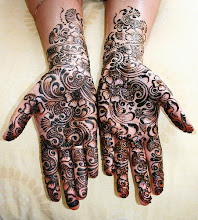My name is Lauren Johnson and I am currently studying abroad in Montevideo, Uruguay. Uruguay is a small country located in South America. It is near the beach and very warm here because instead of having winter, they have summer. I was talking with my friend Sandra, a local Uruguaya, about the weather here, and this is what she told me:
Lauren: Qué calor, Sandra!
Sandra: Sí, hace mucho calor! El sol brilla muy fuerte todo el día!
Lauren: No hace viento para hacer el tiempo más fresco?
Sandra: En Montevideo hace viento todo el tiempo, pero ahora no.
Lauren: Hace llueve durante el verano?
Sandra: Tipicamente, no. Hace mucho calor por la mayoría del verano. Pero llovió mucho ayer. Que lindo la lluvia!
Lauren: Ah, si, cuando llueve y hace nublado tambien. La temperatura fuera mas fresca y no hay tanta humedad. No hay nieve aqui?
Sandra: No, no hay nieve aqui. No he visto nieve en Montevideo.
The most noticable characteristics of weather in Montevideo during the summer is the humidity. The temperature is not unbearable, going into the low 90's at the highest, but the 70 or 80% humidity makes it seem even hotter. Even during the evening, it doesn't cool off. Most of the time it is very sunny and hot, but sometimes a huge rainstorm blows through the city and soaks everything. But primarily, hace mucho calor todo el tiempo.
The native dress of the Uruguayo is very similar to the dress in the United States, especially in the summer. Hay mucha gente que lleva camisetas de algodón, o las faldas y sandalias. The primary function of the clothes are to stay cool. There isn't a huge difference between the clothes they wear in the United States and the clothes that they wear in Uruguay. However, there is a time once a year where the people in Uruguay wear something very special. Every year during the last part of January, there is a giant festival called Carnaval, where the people of Uruguay celebrate their culture in a huge parade that lasts for hours. The parade celebrates some of the history of Uruguay. The two primary constumes that are used are for Mama Vieja and El Gramillero. A man and a woman dress up in classical colonial clothes, the woman wearing un vestido muy antiguo y the man wearing un traje. They wear these to represent slave culture that the Afro-Uruguayans experienced during the colonial era. Another important dress that the Uruguayans have during this celebration is the men's clothing in the candombe group. They wear pantalones flojos y anchos, camisetas tan grandes, y chalecos de varios colores. Sometimes they wear sombreros made of straw to cover their faces. All of the drummers wear zapatos blancos con medias negros, to represent the scars from their time as slaves. The biggest accessory is their large drum, one of three different ones that makes up a Candombe group.




No comments:
Post a Comment